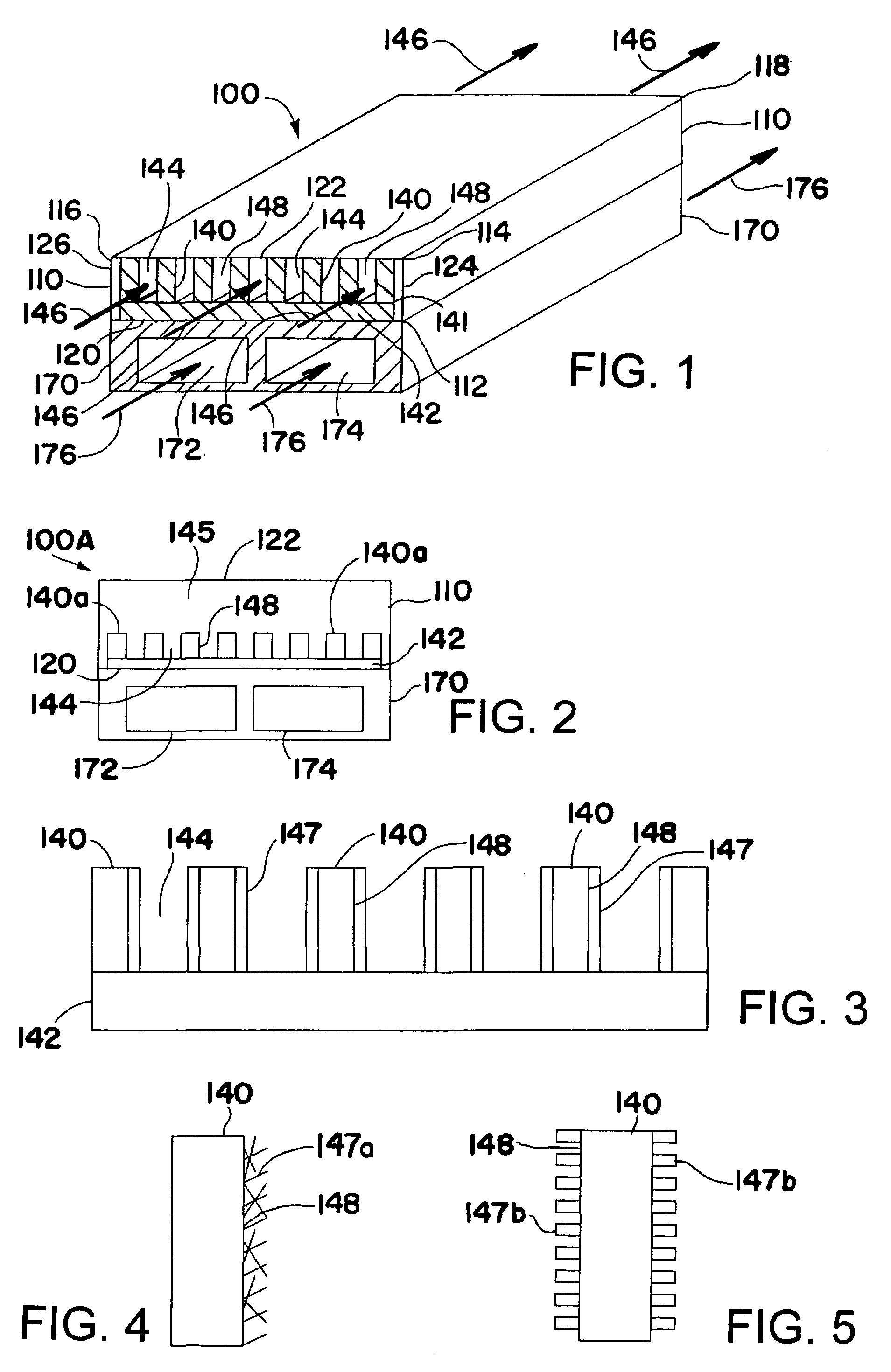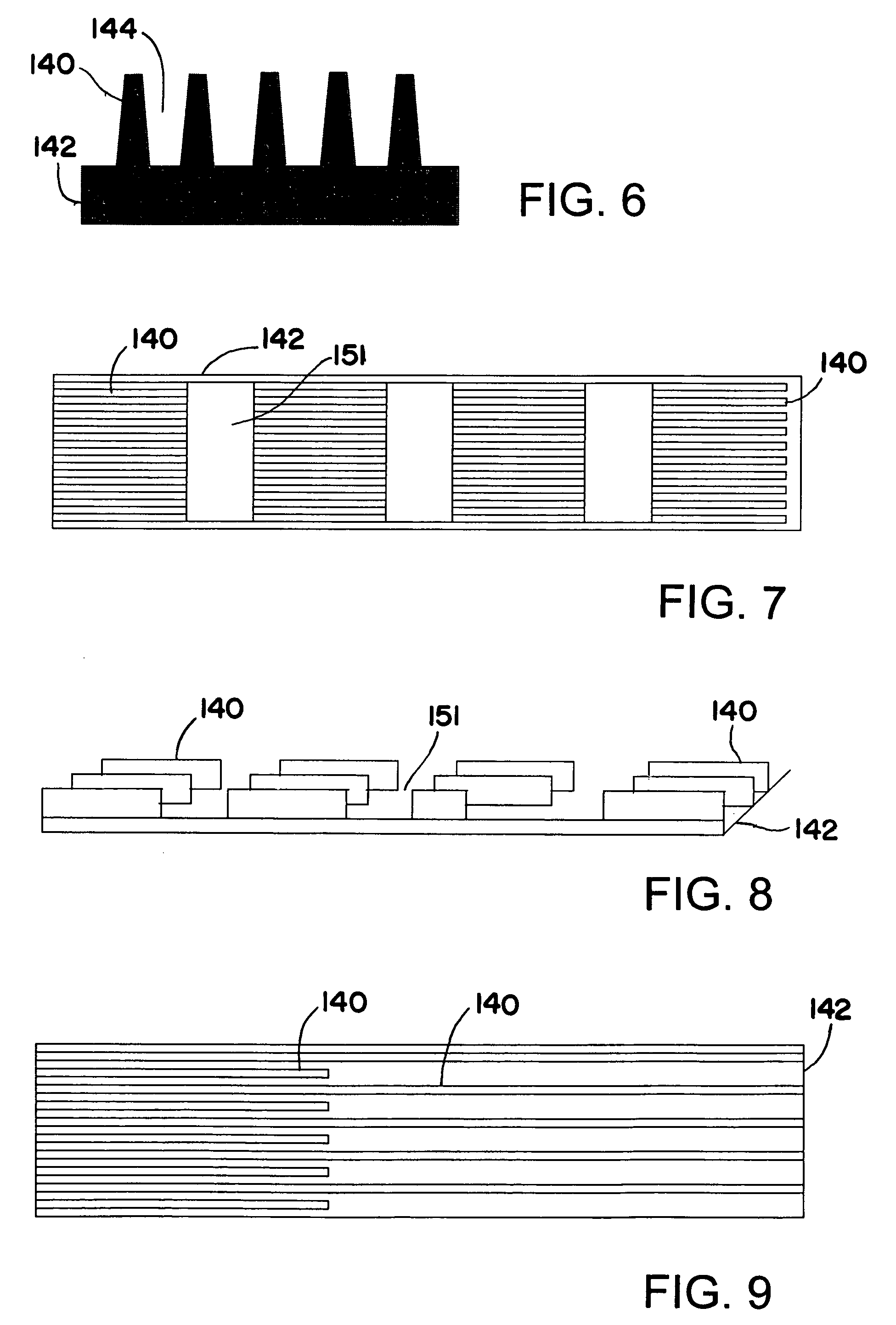Microchannel with internal fin support for catalyst or sorption medium
a microchannel and catalyst technology, applied in the field of microchannels, can solve the problems of insufficient surface area for many processes, difficult to provide adequate catalytic surface area for the process to operate effectively, and difficult to provide sufficient short mass transport distances. achieve the effect of enhancing heat transfer, fast thermal swing, and fast cycle tim
- Summary
- Abstract
- Description
- Claims
- Application Information
AI Technical Summary
Benefits of technology
Problems solved by technology
Method used
Image
Examples
example 1
[0081]A steam / methane reforming (SMR) process with integrated combustion on the opposing side of the heat transfer plane is conducted in a microchannel reactor employing an FeCrAlY fin supported SMR catalyst. The use of an SMR catalyst on fins inserted in a process microchannel produces surprisingly high heat fluxes (10 to 141 W / cm2, low SMR contact times (10 to 0.7 ms), and low SMR pressure drops.
[0082]Except for the FeCrAlY fin which supports the SMR catalyst, the microchannel reactor is constructed of Inconel 617 plates of various thicknesses which are stacked, clamped together, and welded at the perimeter to form a reactor 0.5 by 3.63 inch (12.7 by 92 mm) in footprint by 0.67 inch (17.1 mm) high. All channels for gas flow are machined using conventional techniques except air jet orifices, which are formed via electrode discharge machining (EDM). An air header plate (6.35 mm thick with a 12.7 by 56.5 mm footprint) is welded in a 2.54 mm deep pocket machined into a combustion plat...
example 2
[0100]Fins for use in a partial oxidation reaction process are designed and tested for methane partial oxidation to synthesis gas with focus on following characteristics:[0101]1. High CH4 conversion: use of the fin should provide high CH4 conversion.[0102]2. High H2 Selectivity: use of the fin should provide high H2 selectivity.[0103]3. High CO Selectivity: use of the fin should provide high CO selectivity.[0104]4. Low Pressure Drop: use of the fin should offer low resistance to flow.[0105]5. Mechanical and thermal strength: The fin should have high mechanical strength to sustain large stress conditions inside the channel during fabrication of the device (like bonding) and its operation. A design with good heat transfer characteristics prevents hot spots and material degradation.
[0106]FIG. 6 shows the geometry of a fin that is useful for conducting a POX reaction process in a combustion microchannel. The trapezoidal shape of the fins provides mechanical rigidity at the base of fins....
example 3
[0112]An alternate fin for use in a POX reaction process provides the advantage of reduced pressure drop. The flow area is increased by reducing number of fins. There are five fins projecting up from the fin support. The fins have a trapezoidal cross section as indicated in FIG. 6. The thickness of the fin along with trapezoidal shape of the fins provides mechanical rigidity at the base of the fins. The fins are supported on rectangular support or base to enhance heat transfer characteristics of the fin. The fin is made from FeCrAlY. The fin is fabricated by the wire EDM method. The following table summarizes dimensions of the fin:
[0113]
Dimension (in)Fin ThicknessAt base0.020″At top0.010″Fin spacingAt base0.012″At top0.022″Fin height0.033″Rectangular base height0.020″Overall width0.180″Overall height0.053″Overall length1.500″
[0114]An Al2O3 slurry is prepared by mixing 7.2 g of gamma Al2O3 powder, 12 g of deionized H2O and 42 g Al2O3 beads with 3 mm diameter. The pH value is adjusted...
PUM
| Property | Measurement | Unit |
|---|---|---|
| thermal conductivity | aaaaa | aaaaa |
| height | aaaaa | aaaaa |
| width | aaaaa | aaaaa |
Abstract
Description
Claims
Application Information
 Login to View More
Login to View More - R&D
- Intellectual Property
- Life Sciences
- Materials
- Tech Scout
- Unparalleled Data Quality
- Higher Quality Content
- 60% Fewer Hallucinations
Browse by: Latest US Patents, China's latest patents, Technical Efficacy Thesaurus, Application Domain, Technology Topic, Popular Technical Reports.
© 2025 PatSnap. All rights reserved.Legal|Privacy policy|Modern Slavery Act Transparency Statement|Sitemap|About US| Contact US: help@patsnap.com



